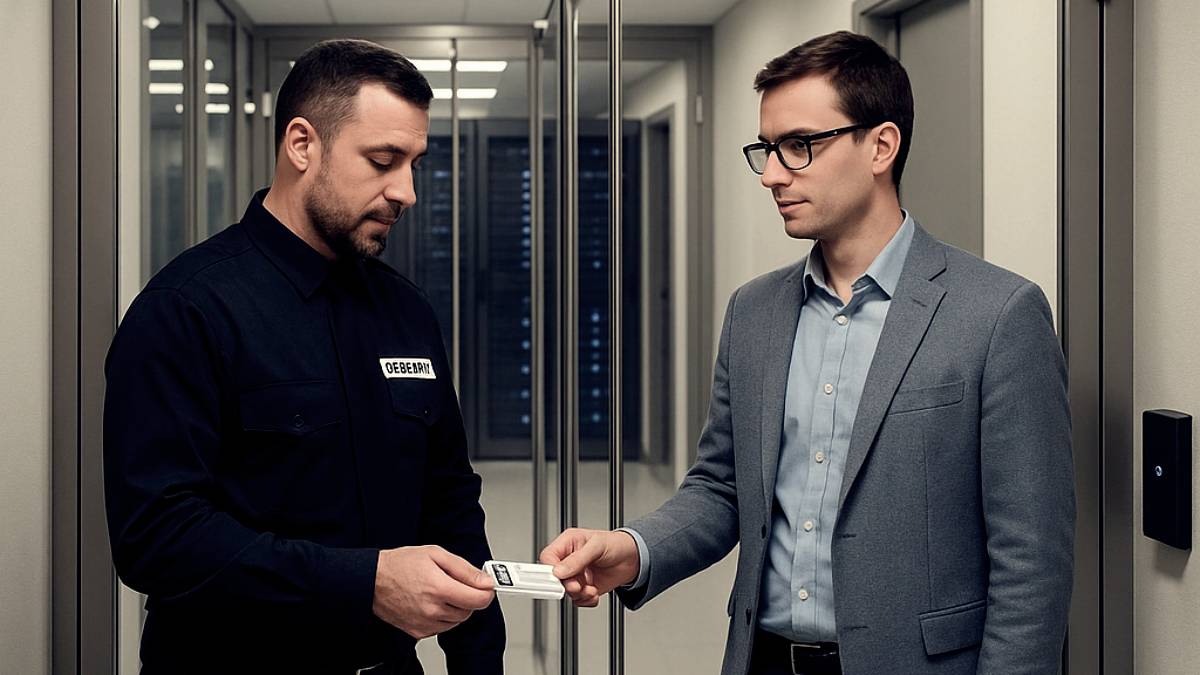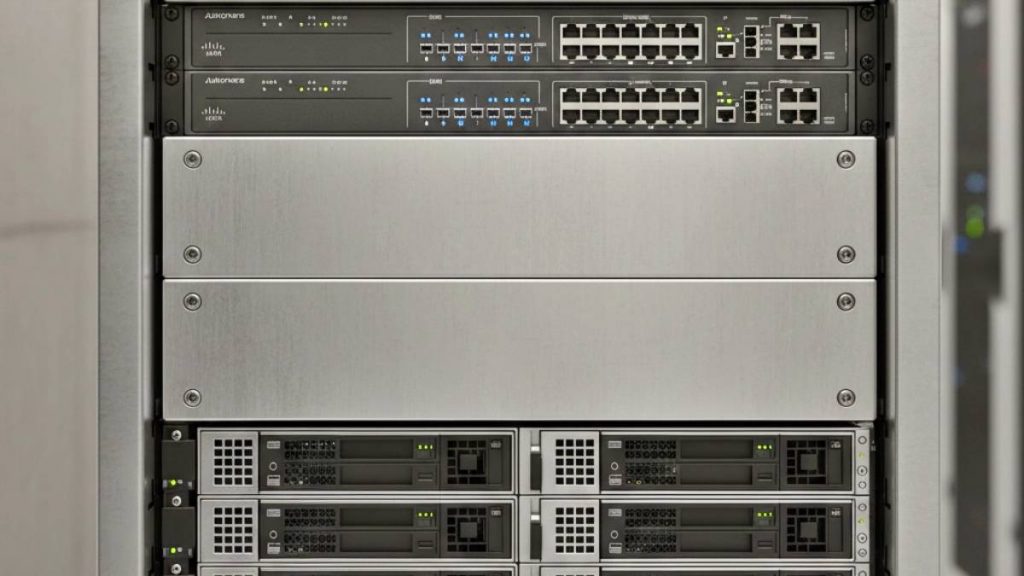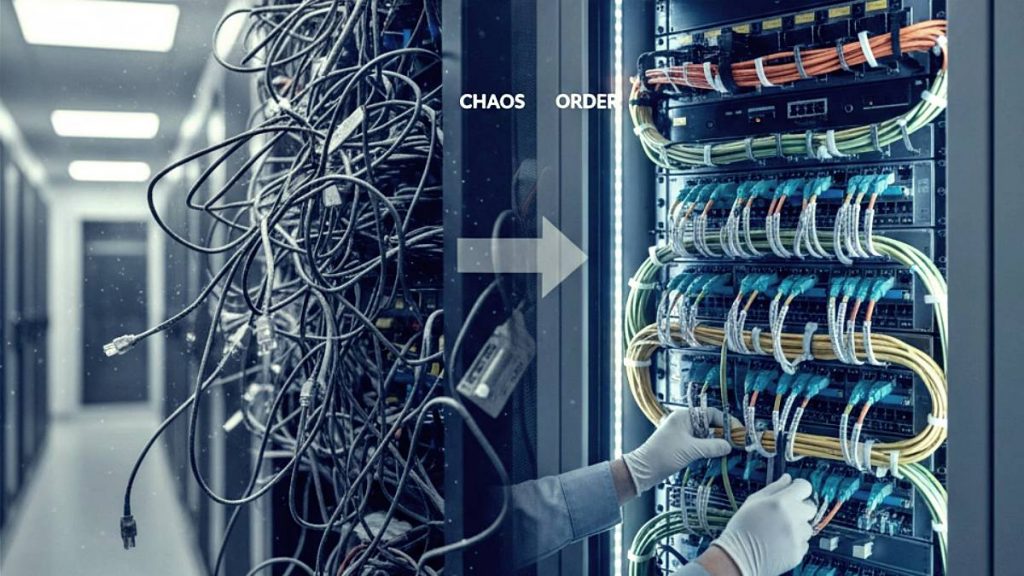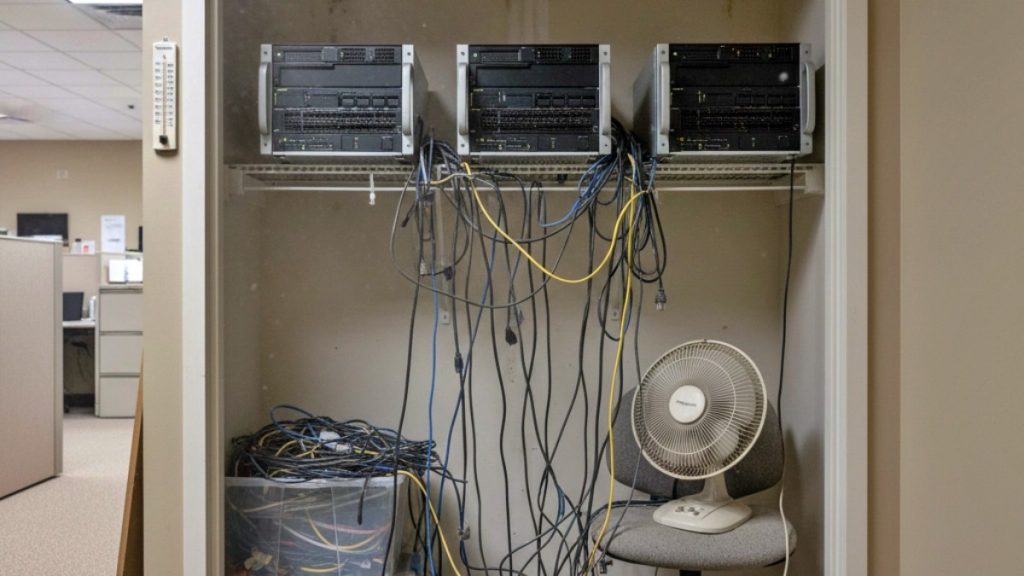Taking a data center tour is the best way to separate marketing claims from operational realities. When your business infrastructure, uptime, and sensitive data are on the line, a walkthrough gives you a deeper view into a provider’s standards, procedures, and values. But maximizing that tour means stepping beyond the surface and asking tough, insightful questions. Here’s your field guide for what to focus on and what to ask during a modern data center site visit—so you’ll leave with absolute confidence in your final decision.

1. Physical Security: More Than Locked Doors
Why it Matters
Your data is only as secure as the physical facility it’s stored in. Layered, measurable security is non-negotiable for protecting systems and meeting compliance standards.
What to Ask
- Perimeter: How does the facility defend its exterior? Are there barriers like fencing or bollards to stop unwanted vehicle or foot traffic?
- Access Control: What’s the check-in process? (Look for requirements such as government-issued photo ID, visitor logs that are kept for at least a year, and mantrap/portal entryways.)
- Surveillance: Is there 24/7 video monitoring? How long are video archives kept, and which areas are covered?
- Cabinet/Cage Security: Are customer spaces isolated? Is there individual access to my equipment? What tracking/logging is available for physical access?
Why dig this deep?
Real-world security breaches often begin with someone physically walking through an unlocked door or tailgating an employee inside. A modern datacenter’s first job is to make that very, very hard.
2. Staffing & Support: Who’s Got Your Back, Always?
Why it Matters
The machines might run the apps, but people keep the whole show upright. From late-night emergencies to hands-on deployments, skilled and available staff are mission-critical.
What to Ask
- 24/7 Presence: Is the facility staffed around the clock? (Not just for security, but with technical and facilities support.)
- Certifications & Training: Who’s on site? Are engineering and ops staff certified (like ITIL or PMP)? What ongoing training do they receive?
- On-Site Services: What’s the procedure if I need hands-on work, like resetting a server or checking a connection? Are “remote hands” and “smart hands” services available at all hours?
- Response Times: In an emergency, what are the average and guaranteed response times, and what’s the escalation process?
Bonus Tip:
Ask to meet some of the team. Attitude and knowledge often tell you more than any spec sheet.
3. Infrastructure Monitoring: Your Data, Their Dashboard
Why it Matters
You want a facility that’s not just robust, but aware. The right tech stack guarantees temperature, cooling, and power are measured—and alerts are instantaneous.
What to Ask
- DCIM Tools: What real-time monitoring tech is in place for temperature, humidity, airflow, power draw, and environmental hazards?
- Equipment Tracking: Is each device labeled and traceable with RFID or similar tools? How is inventory monitored for accuracy?
- Alerting & Automation: When an issue arises (like a temp spike or power fluctuation), how quickly is it detected—and who is notified?
- Data Visibility: Can clients view monitoring data about their environment, and is historical data retained for troubleshooting purposes?
Teams that rely solely on spreadsheets are way behind. You want to see modern dashboards, historic logs, and automated alarms.
4. Building & Environmental Resilience: Designed to Survive
Why it Matters
Floods, fires, earthquakes—Mother Nature (or plain-old aging infrastructure) can bring downtime. The best sites are built and maintained with layered protection for physical threats.
What to Ask
- Structural Integrity: What’s the age and history of the building? Are major systems (roofing, drainage, electrical) up to modern code?
- Disaster Preparedness: How is the site protected against local environmental risks, like earthquakes or floods? Are there documented mitigation plans?
- Infrastructure Redundancy: How many independent power and cooling paths exist? What’s the backup generator runtime? When were they last tested under full load?
- Neighborhood: Is the area at risk for vandalism, traffic accidents, or other non-natural threats?
Don’t just take answers at face value—ask to see backup generators, electrical panels, and disaster preparedness documentation during your tour.
5. Service Offerings: Beyond the Racks and Power
Why it Matters
Your business needs might grow, and partnership is easier when your data center offers technical services that go beyond “just space.”
What to Ask
- Managed Services: Do they offer managed network, security, backup, or even cloud onboarding? Can you upgrade services as your needs evolve?
- Support Channels: Is expert help always a phone call (or ticket) away, 24/7/365?
- Customization: How flexible are they with deployments—like custom power configurations, cabinet setups, or network routes?
- Implementation Support: Is structured cabling or hands-on help for installation/deployment part of the offering?
Look for a team that treats clients as partners and is willing to support unique business plans, not force you into rigid service molds.
6. Compliance & Transparency: Proof, Not Promises
Why it Matters
For many industries, compliance is not just a selling point—it’s a legal requirement. Documentation and clear processes protect your business and speed up audit time.
What to Ask
- Certifications: Is the facility certified for relevant standards (such as SOC 2, HIPAA, PCI-DSS)? How often are external audits performed?
- Access to Docs: Can you review compliance evidence, such as certifications, operations manuals, and emergency procedures?
- Policies: Are there clear data retention, incident response, and change management policies that are enforced?
- Customer Reviews/References: Can the provider offer reference customers or case studies?
You can find more on this at Datacate’s Compliance page if you want a taste of what a transparent datacenter operator should provide.
7. Smart Questions Nobody Asks (But Should)
- Can you walk me through your most recent major incident and how you handled it?
- What’s the longest continuous uptime streak this facility has achieved?
- When was your last major upgrade or infrastructure refresh—and what’s planned for the next two years?
- How do you handle vendor and third-party access to the site?
- What’s your average staff tenure here?
These questions move you from “box-checker” to power evaluator, and will often reveal strengths (or gaps) not obvious from a rote tour.
Final Thoughts: Leave No Stone Unturned
A datacenter tour isn’t about taking a pretty walkthrough; it’s about interviewing the place and its staff for a mission-critical job. The provider should not just tolerate hard questions—they should invite them and answer clearly, with proof.
Go in with a checklist, take notes, and don’t be afraid to ask for a second look at any area that seems glossed over. If you want a starting point, Datacate’s team always welcomes site visits, and we pride ourselves on radical transparency—get in touch any time to take a look behind the curtain.
Ready to dig deeper? Or have your own checklist item to add? Follow up with us and let’s make your datacenter decision the strongest part of your IT strategy.







